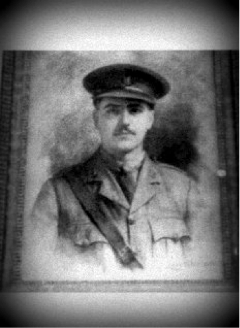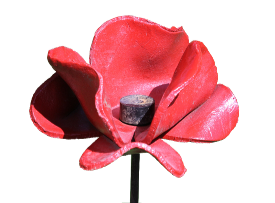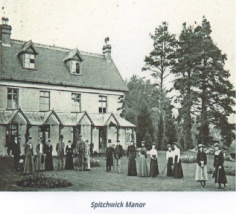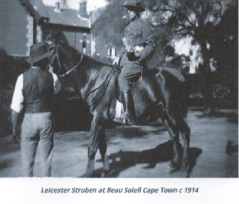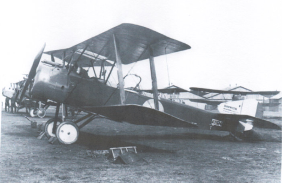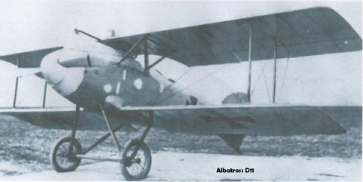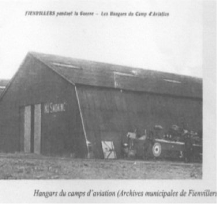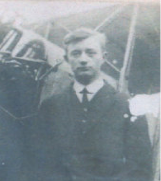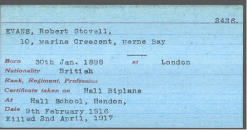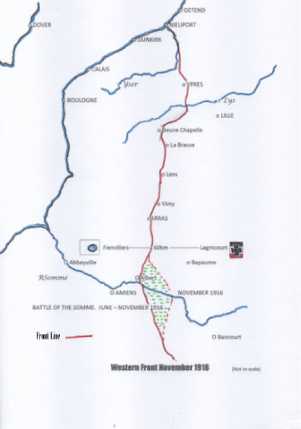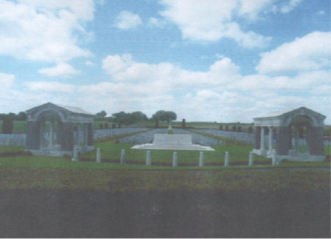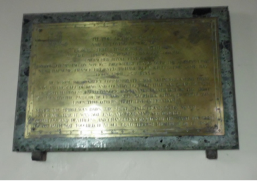Reading Out Loud
Focused Elements:
You can have these explanations read out loud by clicking on 'Speak Explanation' (access key 'a')
These controls are to provide alternative means of accessing the information on this page. Two main facilities are provided: adjusting the text size and listening to the text on the page.
1) Adjusting Text Size:
You can increase the text size by clicking on 'Larger' (access key '+'), and reduce it by clicking on 'Smaller' (access key '-'). You can reset the size back to its original value by clicking on 'Reset' (access key 'j')
2) Listening to the Text
You can adjust the pitch of the spoken word, the rate or speed of delivery and the volume. You can also choose the voice to use by clicking on the drop-down list. The default voice is whatever is the standard for the computer and browser you are using.
To set your default, please refer to the description in the Accessibility Statement.
There are normally three sections of text on the page that you can listen to: the headings, the main text and a selection. Click on 'Speak Headings to speak the page headings (access key 'l'). Click on 'Speak Main Text' (access key 'q') to listen to the main text.
You can also select an area of text in the page using standard select methods and click on 'Speak Selection' (access key 'w') to read the selection aloud.
You can enable the reading out loud of the element that currently has focus by clicking on 'Start Focus Speaking' (access key 'f') and you can stop this by clicking on 'Stop Focus Speaking' (access key 'd').
You can pause the audio by clicking on 'Pause' (access key 'r') and resume by clicking on 'Resume' (access key 't').
To cancel or stop the audio click on 'Cancel' (access key 'y'). To restart the current audio from the beginning, click on 'Restart' (access key 'k').
To hide the accessibility controls click on 'Hide Panel' (access key 'h')
To hide this explanation click on 'Hide Explanation' (access key 'x')
Widecombe-in-the-Moor
Leicester F Struben in WW1

Leicester Frederick Struben was born in Torquay on 25th April 1893. He lived there with his parents Frederick and Mabel Struben, together with his sisters Gertrude and Florence Lillian, and for a short while his younger brother John (who died in early childhood).
At a later date the family moved to Spitchwick Manor, Poundsgate. However prior to war breaking out, they had travelled to South Africa to celebrate the wedding of Florence Lilian and were unable to return to Poundsgate once the war commenced.
Leicester was educated at Eton from 1907 to 1911. At some stage, after leaving Eton, and whilst in South Africa with his parents he served as a trooper in the Mounted Rifles South African Defence Force. (picture above)
On 25th August 1914 he was appointed, as a "University Candidate", to a Second Lieutenancy in the Cheshire Regiment. In December 1914 he was transferred to the 7th (Princess Royal's) Dragoon Guards,(London Gazette 15th December 1914 Page 10722).
Listen to the regimental quick march of the 7th Royal Dragoon Guards played by the Regimental Band of the Household Cavalry and the Regimental Band of the 14/20th Kings Hussars, "St. Patrick's Day":
This track was taken from 'The Greatest Marching Songs Ever'.
In April 1916 he was seconded to the Royal Flying Corps and on 1st November 1916 was promoted to Lieutenant.
Following minimal training he was posted to LXX (70) squadron based at Fienvillers in the Pas de Calais region of France.
It is probable that Lieutenant Struben and other flyers from LXX squadron were in action over the battlefields of the Somme in September 1916 when the another man from Widecombe "Killed in Action" in 1916 (Private Henry James Broome) was taking part on the Battle of Flers/Courcelette with the 10th Battalion Queens Own Royal West Kent Regiment
On the afternoon of 16th November 1916, Sopwith One and Half Strutter (Pictured above) registered number A 3432, took off from Fienvillers Airfield to fly south of Bancourt, near Bapaume, to observe troop displacements of the German Forces.
At approximately the same time Oberleutnant Stefan Kirmaier of the Jasta 2 squadron the German Air Service took off from the German Air Services airfield at Lagnicourt in an Albatross D1 or D2 (picture below).
Archive photographs of Fienvillers Airfield during the Great War:
Oberleutnant Kirmaier spotted the Strutter (A 3432), on this occasion being flown by one of the youngest and earliest Serjeant-pilots of the Royal Flying Corps Robert Stovell Evans (from Herne Bay in Kent) aged only 18. Leicester Frederick Struben was flying as observer on this mission. Kirmaier succeeded in shooting down the Strutter near Bancourt killing both occupants. (6 days later Kirmaier himself was shot down and killed in aerial combat with the Royal Flying Corps.)
The Western Front November 1916
Bancourt Military Cemetery, Pas de Calais
Although Lieutenant Struben's grave is at Bancourt British Cemetery, Pas de Calais, the plane crashed behind German lines and originally German forces buried Lieutenant Struben's body at Cloudy Trench Cemetery Gueudecourt. When Commonwealth forces retook Bancourt in 1917 the graves were transferred to the newly created Bancourt Military Cemetery. The land where the original Cloudy Trench Cemetery was located has long since been returned to agricultural purposes.
Memorial Plaque St John the Baptist Church Leusdon
The tablet reads: HE WHOM THIS TABLET COMMEMORATES WAS NUMBERED AMONG THOSE WHO AT THE CALL OF KING AND COUNTRY LEFT ALL THAT WAS DEAR TO THEM. ENDURED HARDNESS, FACED DANGER, AND FINALLY PASSED OUT OF THE SIGHT OF MEN BY THE PATH OF DUTY AND SELF SACRIFICE. GIVING UP THEIR OWN LIVES THAT OTHERS MIGHT LIVE IN FREEDOM. NEVER THE SPIRIT WAS BORN, THE SPIRIT SHALL CEASE TO BE NEVER; NEVER THE TIME WAS NOT END AND BEGINNING ARE DREAMS; BIRTHLESS AND DEATHLESS AND CHANGELESS REMAINETH THE SPIRIT FOR EVER. DEATH HATH NOT TOUCHED IT AT ALL. DEAD THOUGH THE HOUSE OF IT SEEMS.
The Fallen Subaltern by Herbert Asquith.
Listen to Lorraine Ashman reading The Fallen Subaltern:
The starshells float above, the bayonets glisten;
We bear our fallen friend without a sound;
Below the waiting legions lie and listen
To us, who march upon their burial ground.
Wound in the flag of England, here we lay him;
The guns will flash and thunder o'er the grave;
What other winding sheet should now array him,
What other music should salute the brave?
As goes the Sun-God in his chariots glorious,
When all his golden banners are unfurled,
So goes the soldier, fallen but victorious,
And leaves behind a twilight in the world.
And those, who come this way in days hereafter,
Will know that here a boy for England fell,
Who looked at danger with eyes of laughter,
And on the charge his days were ended well.
One last salute, the bayonets clash and glisten;
The shadowy file goes by without a sound;
One more has found the men who lie and listen
To us, who march upon their burial ground.
Herbert Asquith (11 March 1881 - 5 August 1947) was an English Poet, Novelist, and Lawyer. He was the second son of H.H. Asquith Prime Minister for part of the Great War. He was also younger brother of Raymond Asquith, who was an officer in the Grenadier Guards and "Killed in Action" fighting in the battle of the Somme.in September 1916. He was greatly affected by his own service with the Royal Artillery and also by his brother's death, "The Fallen Subaltern" being a tribute to all fallen soldiers.
Copyright and Acknowledgments
Spitchwick Manor & Cape Town 1914: Rod Kruger The Heritage Portal. Sopwith Strutter, Albatross Aeroplanes and Sjt R S Evans: The Aerodrome. Fienvillers airfield: Archives Municipales de Fienvilliers. Bancourt Military Cemetery: CWGC. Leusdon tablet: David Ashman.
Thanks to Lorraine Ashman for reading the poem.
Back to the list of the fallen
The information on this page was last modified on November 07 2018 13:29:50.



